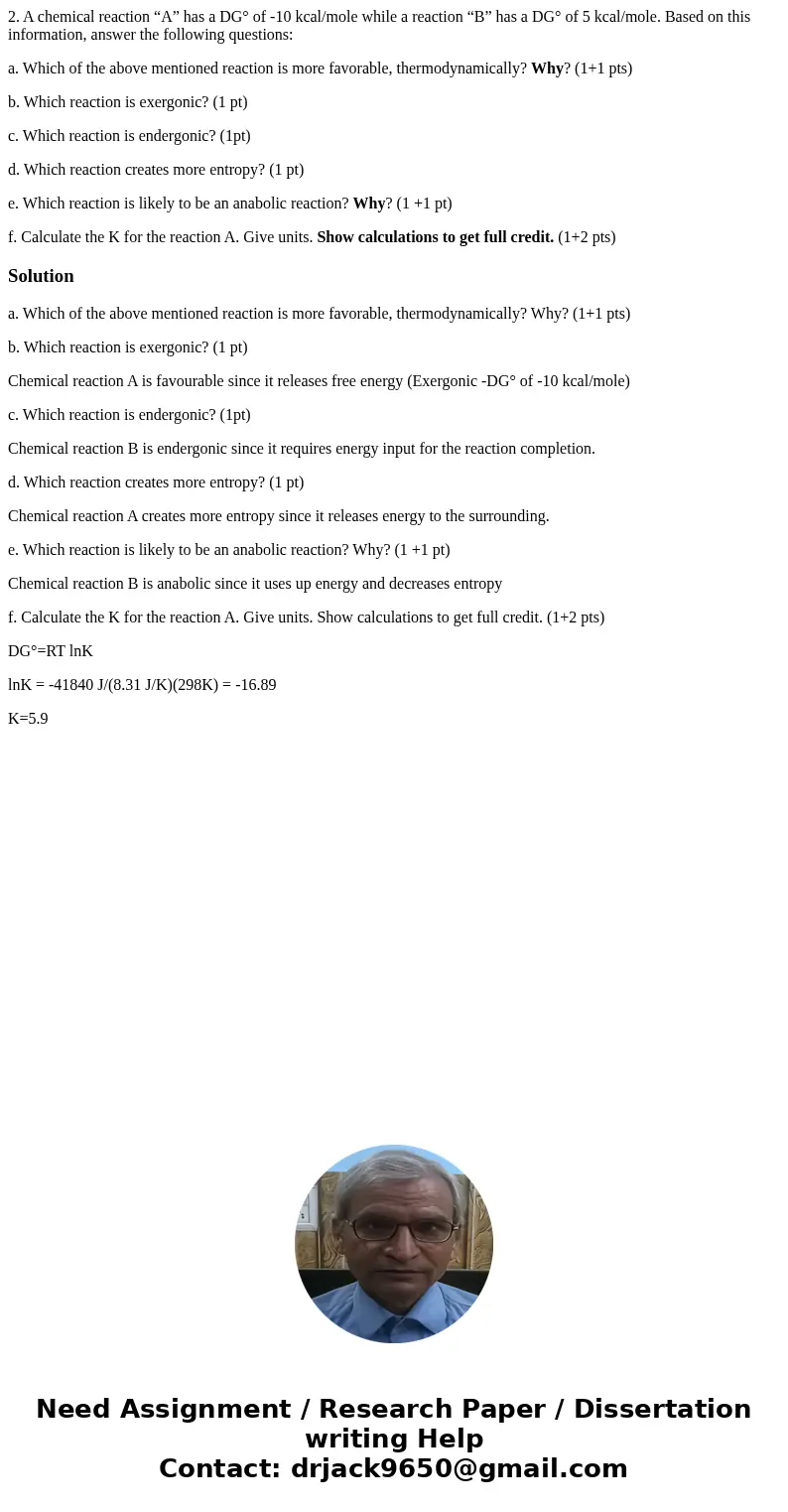2 A chemical reaction A has a DG of 10 kcalmole while a reac
2. A chemical reaction “A” has a DG° of -10 kcal/mole while a reaction “B” has a DG° of 5 kcal/mole. Based on this information, answer the following questions:
a. Which of the above mentioned reaction is more favorable, thermodynamically? Why? (1+1 pts)
b. Which reaction is exergonic? (1 pt)
c. Which reaction is endergonic? (1pt)
d. Which reaction creates more entropy? (1 pt)
e. Which reaction is likely to be an anabolic reaction? Why? (1 +1 pt)
f. Calculate the K for the reaction A. Give units. Show calculations to get full credit. (1+2 pts)
Solution
a. Which of the above mentioned reaction is more favorable, thermodynamically? Why? (1+1 pts)
b. Which reaction is exergonic? (1 pt)
Chemical reaction A is favourable since it releases free energy (Exergonic -DG° of -10 kcal/mole)
c. Which reaction is endergonic? (1pt)
Chemical reaction B is endergonic since it requires energy input for the reaction completion.
d. Which reaction creates more entropy? (1 pt)
Chemical reaction A creates more entropy since it releases energy to the surrounding.
e. Which reaction is likely to be an anabolic reaction? Why? (1 +1 pt)
Chemical reaction B is anabolic since it uses up energy and decreases entropy
f. Calculate the K for the reaction A. Give units. Show calculations to get full credit. (1+2 pts)
DG°=RT lnK
lnK = -41840 J/(8.31 J/K)(298K) = -16.89
K=5.9

 Homework Sourse
Homework Sourse